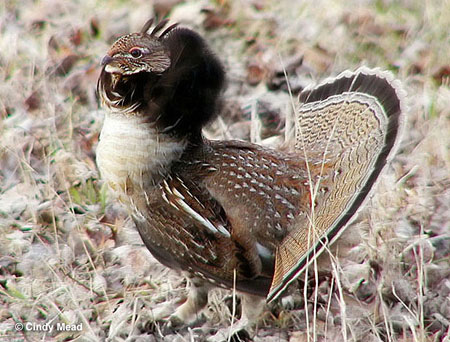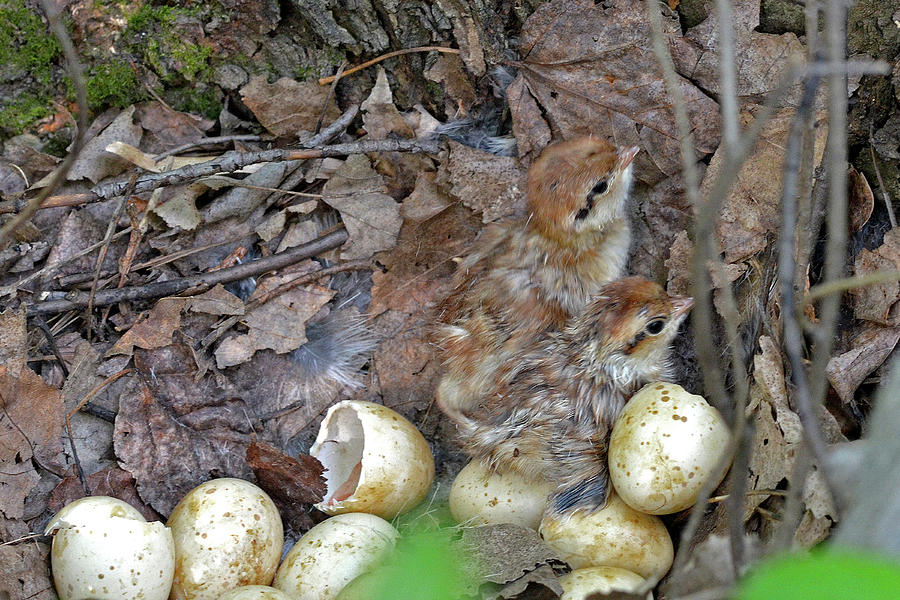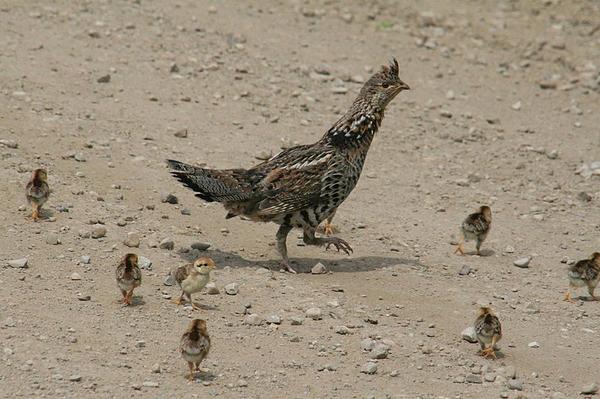by Doug Becker

The reason you should listen for the Ruffed Grouse is because they are otherwise, next to impossible to see. Their grayish or reddish plumage provides excellent camouflage for this secretive game bird. Yet, the male’s drumming sound can be heard in most any northern forest. Ruffed Grouse are foliage gleaners and spend most of their time on the ground. The best way of finding these birds is to follow their drumming sound and walk quietly through the woods in hopes of flushing them out. I’ve seen lots of Ruffed Grouse, but almost all were by accident.
The signature drumming sound of the male Ruffed Grouse does not come from beating on something, but by forcing air through his wings. This display usually takes place while atop a log, or rock, or even a mound of dirt. He first inhales enough air to nearly double his size. Then, he quickly rotates his wings back and forth, causing air to rush through his cupped wings, making a vacuum to generate a deep thumping sound. This vibrating thumping sound will carry and be heard for over a quarter mile. A drumming sequence will last 8-10 seconds as his wings beat up to 50 times. In the spring of the year, this attracts the hens for mating. His drumming will continue throughout summer and fall and it’s believed he does this to identify his territory and warn other males to keep their distance.

The plump Ruffed Grouse looks somewhat like a small chicken. They have a small sporty crest on their head, and a nicely fanned tail trimmed with a dark band. Displaying males will raise their long neck-feathers which creates a showy black ruff around the neck. Hence their name, Ruffed Grouse.


The Ruffed Grouse is a non-migrating northern bird. Their territory is from central Alaska through all of southern Canada, and across the northern United States. Their nest sites are near the bottom of a tree, the side of a log, a hollowed out stump, or on the ground where there is little vegetation to block the sight of an approaching predator. It’s not unusual for Pheasants, or even Turkeys to take over these nest. Grouse nests are simply a depression in the leaves on the floor of the forest. The bowl-shaped nest measures 6 inches across and 3 inches deep. Vegetation from around the nest is used as its lining. Interestingly, after the male and female breed, the male leaves and then the female picks the nesting site, builds the nest, and raises the young. Hmm… Clutch size is a whopping 9-14 eggs. At least half of the chicks will not survive to maturity. Incubation period is about 24 days, and the chicks can walk and feed themselves within 24 hours of hatching. This is a busy mom, and I don’t know where HE went!


Ruffed Grouse have been a favorite game bird for years …. lots of tender breast meat, a little gamey, and does not taste like chicken. The popularity of hunting these birds brought some of North America’s earliest game management. New York closed part of their hunting season on Ruffed Grouse back in 1708 to preserve the grouse population.

Listen for the Ruffed Grouse because they are otherwise, next to impossible to see. One drumming male usually causes more to drum, and the woods can become full of vibrating drums. Cool! There’s nothing like it! So, whether you’re packing a shotgun, or a quality pair of binoculars, listen for the Ruffed Grouse. See ya out there!

